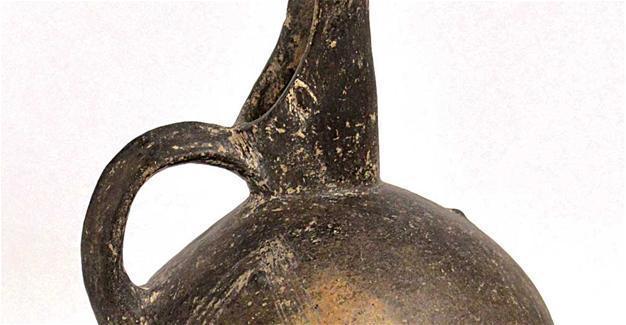Ancient Yortan jug returned to Turkey from UK
LONDON

The Culture, Tourism and Promotional Department of the Turkish Embassy in London has announced that a 4,500-year-old jug, which was taken over to the U.K. nearly 60 years ago, has been returned to Turkey.
In a written statement on the return of the jug, the department said the cultural artifact dated back to the early Bronze Age and featured characteristics of the ancient western Anatolian Yortan culture from 3,000 to 2,000 B.C.
“The 26.5 centimeter-high jug is made of earthenware,” the statement said.
Thelma Bishop, a British citizen and a former gallery owner in Manchester, who visited the ancient city of Ephesus in western Turkey in 1960s, bought the jug as a souvenir, it added.
“Later a British auction house found that the jug was a cultural heritage and Bishop decided to return the jug to Turkey,” the statement said, adding that Bishop and the auction house official were gifted a Museum Card.
“The return of the Yortan jug is very important, as it made auction houses and public opinion in other countries aware of the international legal struggle of countries like Turkey, many of whose cultural artifacts have been smuggled abroad,” the statement added.
Adam Partridge, the owner of the Adam Partridge Auction house, was also quoted in the statement, expressing satisfaction with the return.
“I am very happy that this rare artifact has returned to its home in Turkey.
‘Unfortunately, not every auction house chooses this way in such situations. I hope we become a model for similar situations in the United Kingdom,” Partridge said.
The jug will find a new home in the Museum of Anatolian Civilizations in Ankara.
Yortan a prehisroric burial site
Yortan is a prehistoric burial site in İzmir’s valley of Bakırçay in western Turkey including material offerings to the dead. It was found and excavated by a French engineer Paul Gaudi nearly 80 years ago but the results have never been properly published.
The tombs in the burial site consists mostly of pottery in the form of jugs and jars, and, less frequently bowls.
 The Culture, Tourism and Promotional Department of the Turkish Embassy in London has announced that a 4,500-year-old jug, which was taken over to the U.K. nearly 60 years ago, has been returned to Turkey.
The Culture, Tourism and Promotional Department of the Turkish Embassy in London has announced that a 4,500-year-old jug, which was taken over to the U.K. nearly 60 years ago, has been returned to Turkey.